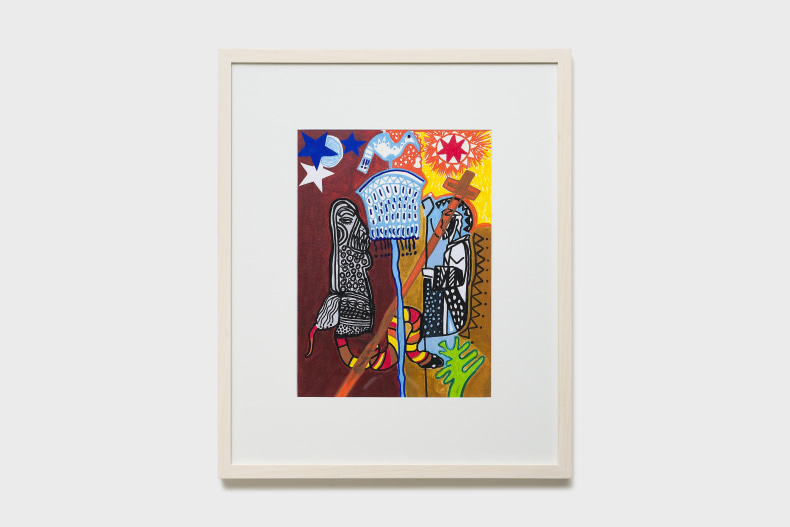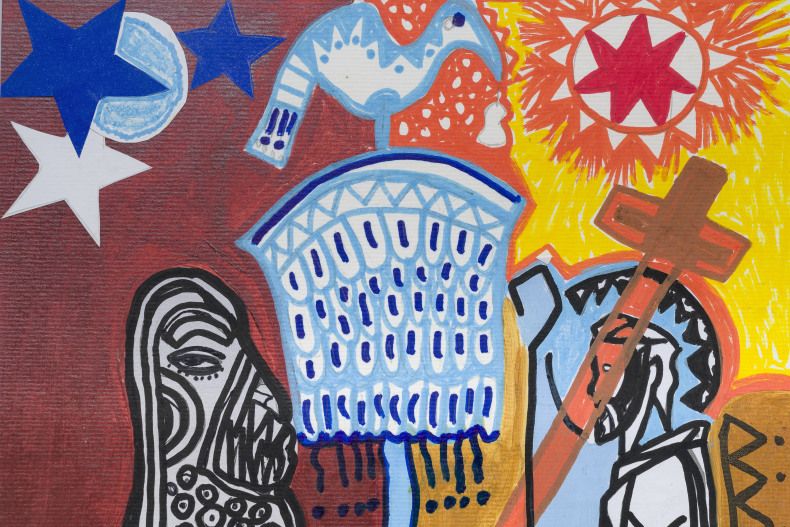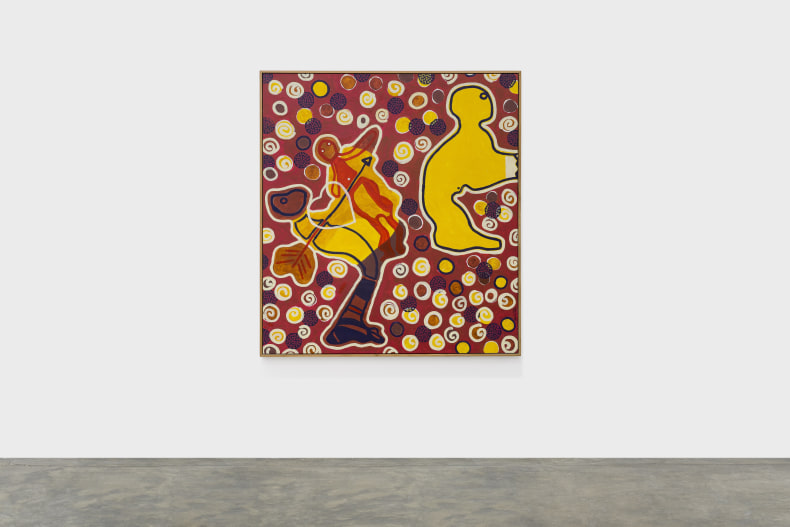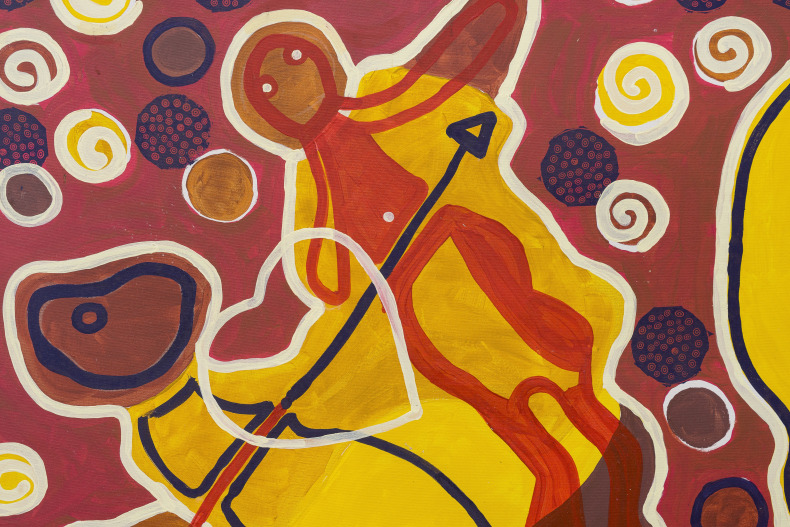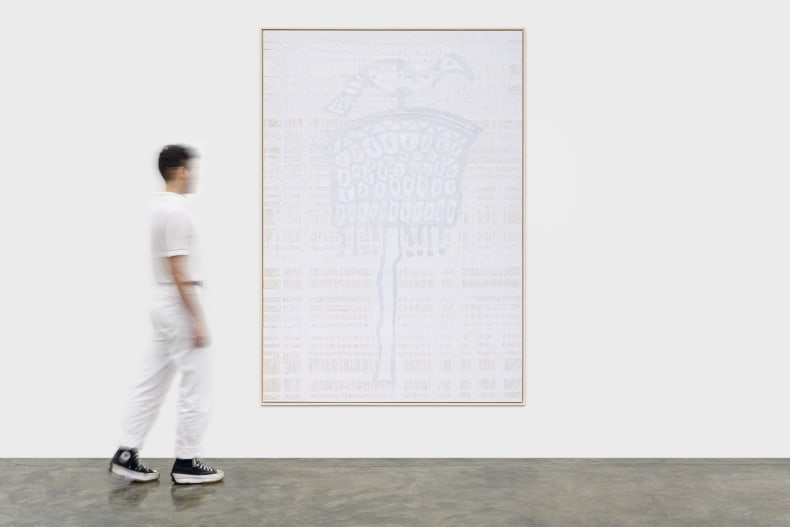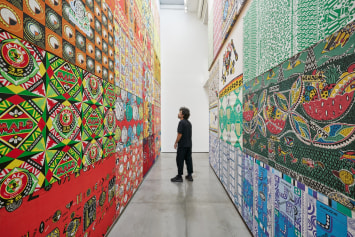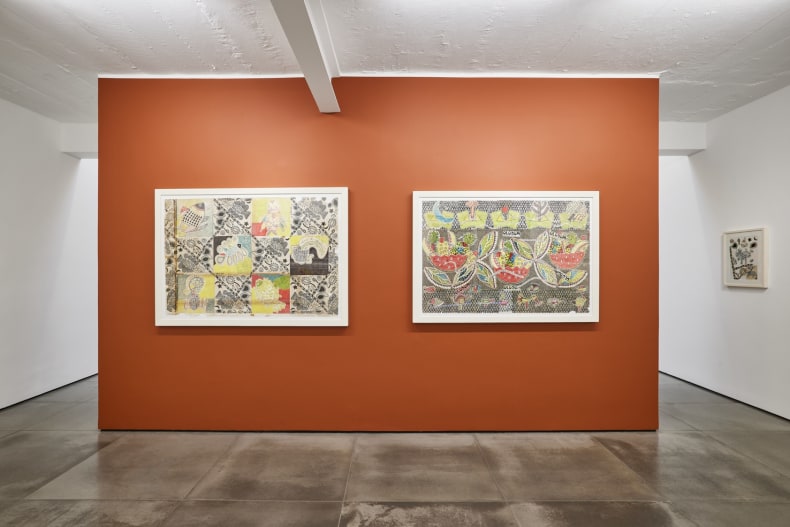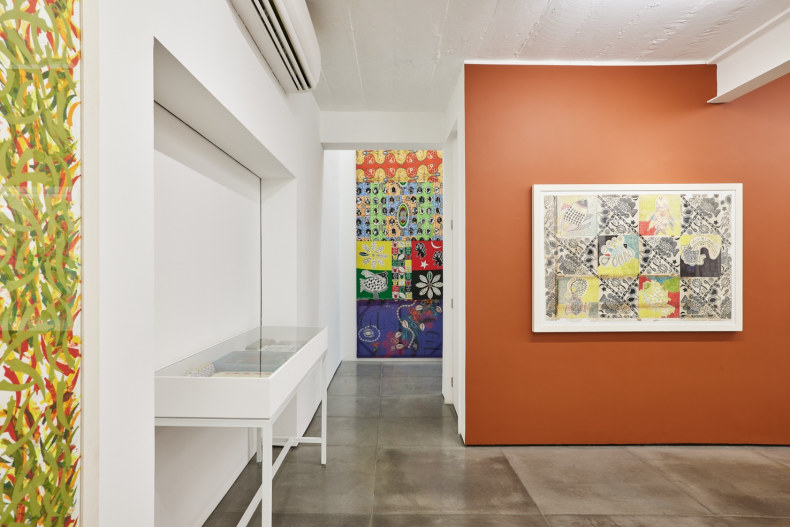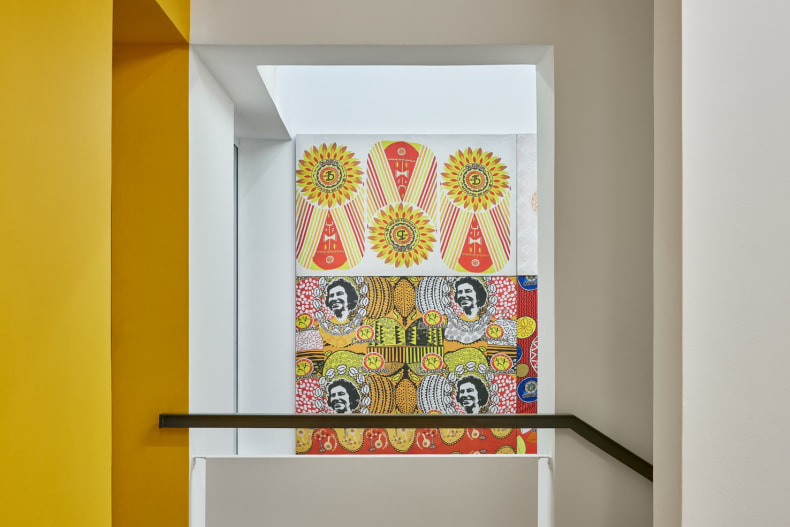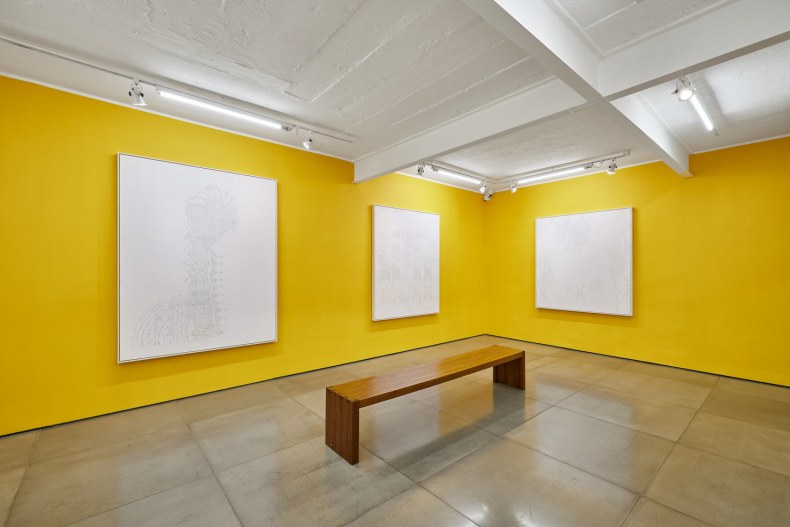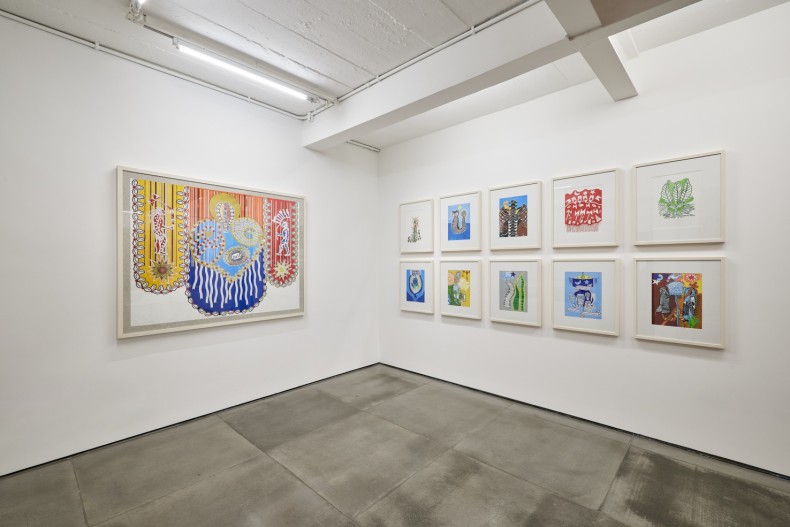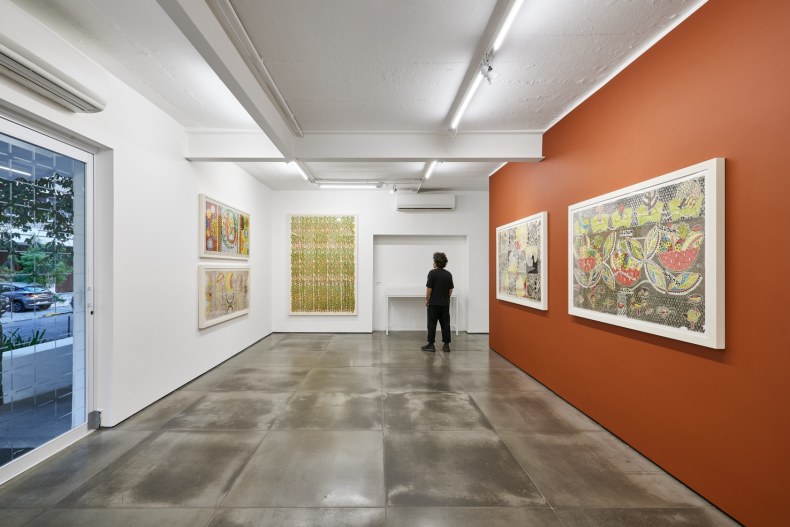Nara Roesler Rio de Janeiro is pleased to present Other Carnivals, Alberto Pitta's (Salvador, 1961) first solo exhibition at the gallery, which began representing him this year. Curated by Vik Muniz, the show provides a historical overview of his production over more than forty years, featuring documentary elements such as old matrices, sketches, notebooks and books containing his work. The second floor of the gallery will be dedicated to recent and unpublished works, in silkscreen and ink on canvas, with a predominance of white tones, reminiscent of the Richelieu stitch embroidery that the artist's mother used to do. The exhibition also features an installation environment made up of fabric samples from his gallery spanning more than three decades.
In his work, Pitta represents elements and symbolisms linked to spirituality and African religions, making direct reference to the Bahian context. While these motifs were originally worked on through the clothing and printing he did for the Bahian carnival blocks, recently the artist has dedicated himself to other languages, such as painting, screen printing on canvas, and installation work. The symbolism explored by the artist refers in particular to Yoruba mythology: from West Africa, where Nigeria and Benin are today, and which exerted a great influence on Salvador and the Recôncavo of Bahia.
Vik Muniz says that, as an artist, he is always very concerned about how "art becomes relevant, the moment it transcends the context of the gallery and the museum and becomes part of people's daily lives". "This has opened up an enormous and long-lasting dialog between Pitta and me," he comments. "I want people to see how big this artist is and what he's been doing for over forty years. He's exhibited in Germany, Sydney, and many places. This show may be important for him, but it's even more so for the art world," he says.
Pitta and Muniz met in 2000, at the exhibition "A Quietude da Terra: vida cotidiana, arte contemporânea e projeto axé", which brought together artists from Bahia and abroad, curated by France Morin, at the Bahia Museum of Modern Art and, since then, the artists have become great friends. The exhibition at the gallery, however, is one of the first times they have talked directly about their work.
Son of the ialorixá Mãe Santinha, from Ilê Axé Oyá, an educator and embroiderer specializing in Richelieu stitch, Pitta began his career at the end of the 1970s, creating prints for small carnival groups such as Zâmbia Pombo and Oba Layê, in the neighbourhood where he lived, in São Caetano. Throughout his career, however, he worked in partnership with other important blocos in the capital of Bahia, such as Ara Ketu and Ilê Aiyê, and acted as artistic director of Olodum. Since 1998, he has run his own bloco, Cortejo Afro, for which he does all the visual production. Pitta says he likes to provoke "illiterate encounters": "Between those who didn't have the opportunity to study, and those who are academics but don't know the symbols of African religions".
According to Vik Muniz, "The iconography in his work is very important, and you learn from it. It's a booklet of meanings, many of them discreet, because Candomblé doesn't like to talk much, and Pitta releases things homeopathically," he says, and adds: "Pitta has already invaded the surroundings of the white cube, and now in this show we want to tell a little about each thing he has done."
